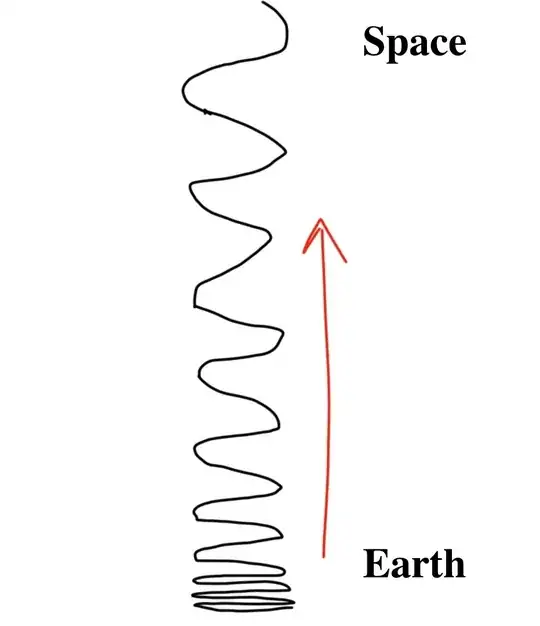Reading through Hawking's Brief History of time, there is passage which says
"Another prediction of General Relativity is that time should appear to run slower near a massive body like the earth. This is because there is a relation between the energy of light and its frequency. the greater the energy, the greater the frequency. As light travels up in the earth's gravitational field, it loses energy and so its frequency goes down. To someone high up, it would appear everything below was taking longer to happen."
 The last part is what confuses me. I drew a simple illustration to explain the passage from the book. Now if im in space, won't it be the opposite of what the passage says and everything below would be happening more quickly ? The higher frequency, in my head, sounds like something is happening at a faster pace, more quicker. So why does it say " it would everything below was taking longer to happen" . Can someone explain this to me please ?
The last part is what confuses me. I drew a simple illustration to explain the passage from the book. Now if im in space, won't it be the opposite of what the passage says and everything below would be happening more quickly ? The higher frequency, in my head, sounds like something is happening at a faster pace, more quicker. So why does it say " it would everything below was taking longer to happen" . Can someone explain this to me please ?
Also expanding on that, I've read in other articles, that the clock runs slower for astronauts in space. So is this like a bell curve, where the clock runs slow near the earth ( due to high gravitational field ) and then faster at the edges of earth's atmosphere and then slow again in altitudes at where the ISS is orbiting ? This is confusing . Could someone explain this to me please ? Thank you.